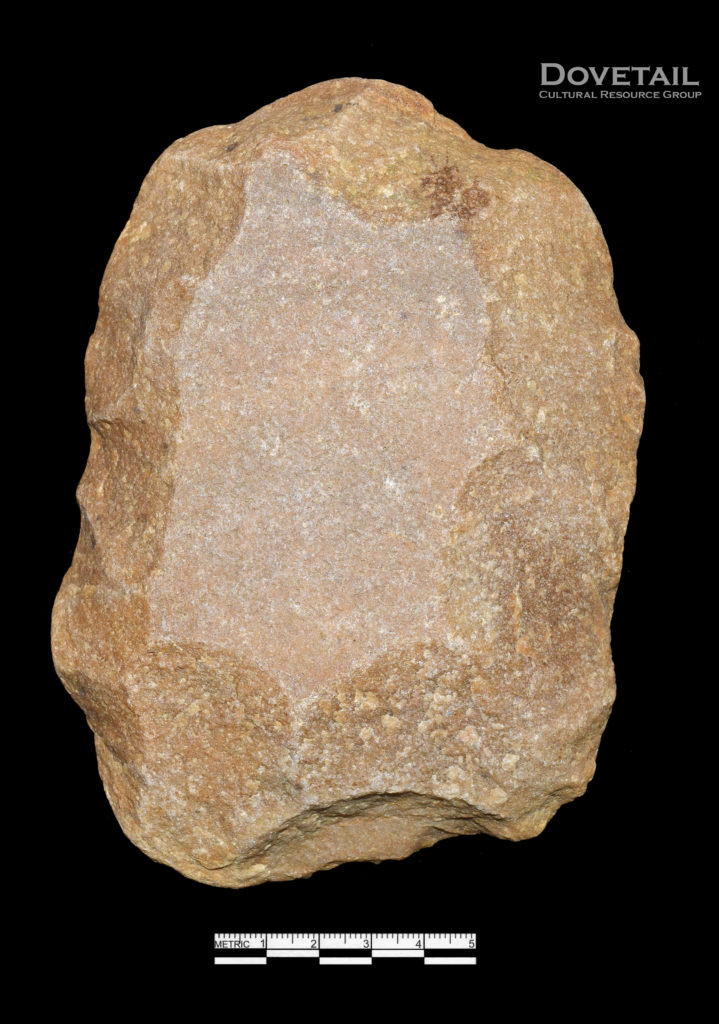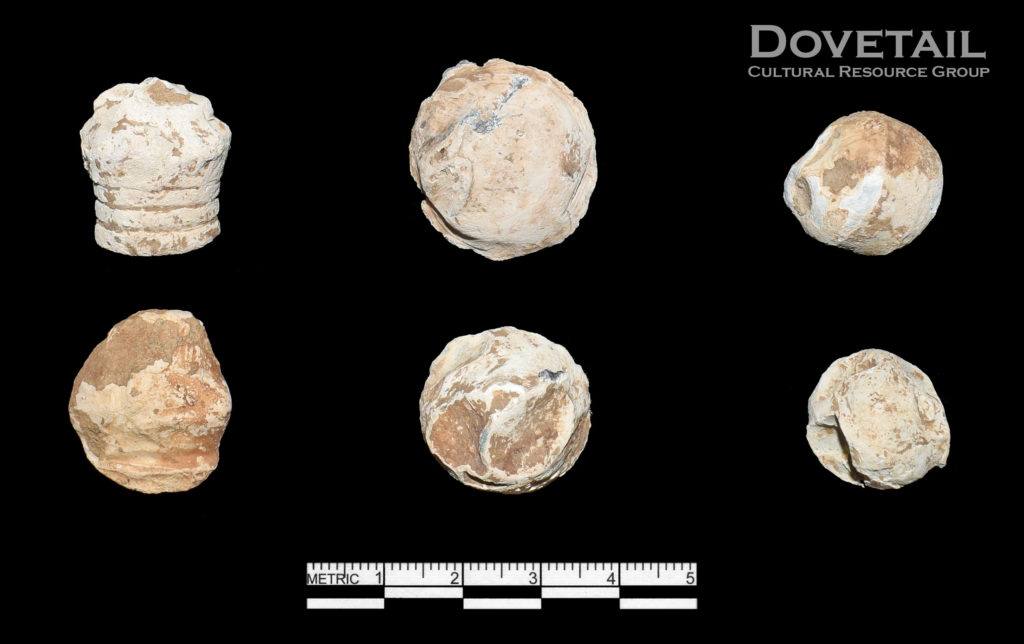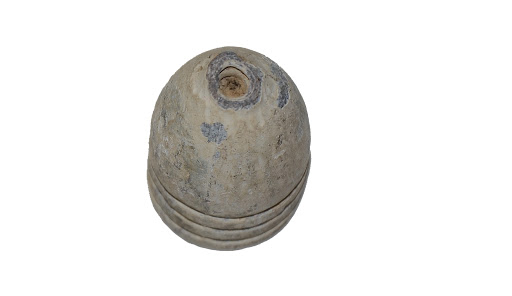By Joe Blondino
In June 2019, Dovetail conducted an archaeological survey of a project area located along Strawberry Run in Alexandria, Virginia. At first, the project area seemed like it might not have much to offer. Most of the project area was located along the banks of a stream, a narrow and frequently inundated floodplain, and steep slopes to the uplands—none of which make particularly good places to live. However, the ravine in which it was located lies between two Civil War forts: Fort Worth to the northwest and Fort Williams to the east. Largely because of the potential for the project area to contain Civil War artifacts, a Phase I archaeological survey was conducted and included use of metal detectors, which is a proven way to locate Civil War artifacts.
Initially, the metal detector survey located only modern trash. The shovel test pits, on the other hand, produced prehistoric artifacts, including a projectile point dating to the Middle Archaic period (circa 8,000–5,500 years ago). The biggest surprise came as the crew was crossing the stream to access the western part of the project area; they looked down into the streambed and saw a large edged cobble! This was a piece of quartzite that someone in the prehistoric period had chipped into a “preform”—a roughly shaped “blank” that could later be modified into a finished stone tool (Photo 1). We spent much of the remainder of the day scouring the banks of the stream and finding a considerable number of artifacts that represented prehistoric populations taking advantage of the cobbles eroding out of the banks of the stream and using them to produce preforms. These preforms would then be carried off to be made into finished tools elsewhere. We thought we might find Civil War artifacts, but had stumbled across an entirely different type of site! Because no other sites like this were known to be located nearby, we saw this as an opportunity to learn more about prehistoric quartzite “quarrying” and recommended additional archaeological work.

Photo 1: Quartzite Biface Recovered from Site 44AX0240.
The results of the Phase II study, which involved digging additional test pits, as well as a few larger test units, revealed that prehistoric activity at the site was mostly restricted to the streambed itself, with relatively little on the adjacent floodplain. But we also got another surprise. Several of the test pits produced fired Civil War bullets. Now we have Civil War stuff on our prehistoric site! So, we got the metal detector back out. In all, we recovered eight lead projectiles including a Civil War-era Minié ball, five round balls, and two pieces of buckshot, all of which had been fired and impacted (Photo 2). This was a bit of a mystery too, as no battles were fought in the vicinity of the site, and the projectiles were all recovered from the valley floor rather than the steep valley walls, as might be expected if the site was used as a firing range with the valley walls as a backstop. We believe that the projectiles may represent unloading of firearms, as they were all of types that would have been fired from muzzle-loading weapons. Once such a firearm is loaded, it can be unloaded only through extraction using a “worm,” a corkscrew-like tool that taps into the projectile so it can be pulled out of the muzzle (Photo 3), or through discharge of the weapon. It may be the case that soldiers from one or both of the nearby forts used the Strawberry Run valley as a convenient and safe place to unload weapons by discharging them into the valley floor, perhaps during changing of guardpost personnel or when loaded weapons required maintenance.

Photo 2: Minié Ball and Round Musket Balls Recovered from Site 44AX0240.

Photo 3: Example of a ‘Pulled’ Bullet Showing Hole Where it was ‘Wormed’.
Dovetail’s work at the Strawberry Run Site is an excellent example of the kinds of unexpected discoveries that are often made in archaeology and goes to show the importance of thorough examination of all parts of the landscape. You never know what you’re going to find!
Any distributions of blog content, including text or images, should reference this blog in full citation. Data contained herein is the property of Dovetail Cultural Resource Group and its affiliates.
